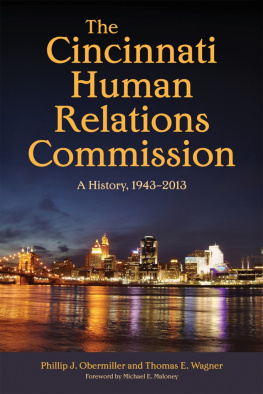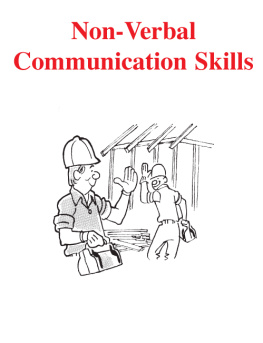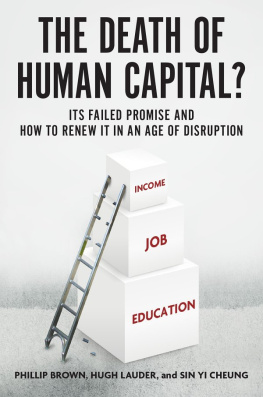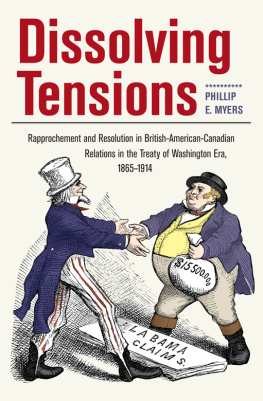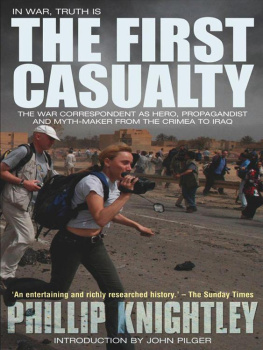Ohio University Press, Athens, Ohio 45701
ohioswallow.com
2017 by Ohio University Press
All rights reserved
To obtain permission to quote, reprint, or otherwise reproduce or distribute material from Ohio University Press publications, please contact our rights and permissions department at (740) 593-1154 or (740) 593-4536 (fax).
Cover image: Cincinnati, Ohio from across the Ohio River.
Photo by Derek Jensen. Courtesy Wikimedia Commons.
Cover design by Beth Pratt.
Printed in the United States of America
Ohio University Press books are printed on acid-free paper

27 26 25 24 23 22 21 20 19 18 17 5 4 3 2 1
Library of Congress Cataloging-in-Publication Data
Names: Obermiller, Phillip J., author. | Wagner, Thomas E., author.
Title: The Cincinnati Human Relations Commission : a history, 1943-2013 / Phillip J. Obermiller, Thomas E. Wagner ; foreword by Michael E. Maloney.
Description: Athens : Ohio University Press, 2017. | Includes bibliographical references and index.
Identifiers: LCCN 2017026386| ISBN 9780821422991 (hardback) | ISBN 9780821446218 (pdf)
Subjects: LCSH: Cincinnati Human Relations CommissionHistory. | Civil rightsOhioCincinnatiHistory. | MinoritiesPolitical activityOhioCincinnatiHistory. | Cincinnati (Ohio)Social policyHistory. | BISAC: HISTORY / United States / 20th Century. | POLITICAL SCIENCE / Political Freedom & Security / Civil Rights.
Classification: LCC JC599.U52 O46 2017 | DDC 323.09771/7809045dc23
LC record available at https://lccn.loc.gov/2017026386
Foreword
Understanding the history of the Cincinnati Human Relations Commission requires understanding the emergence of Cincinnatis entire civic structure. The citys civic institutions are rooted in the Progressive Era, which lasted from the 1890s well into the twentieth century. Progressivism included the following characteristics:
An affirmation of urban life and the belief that whatever ails the city can be fixed through planning and good government. For Progressives and their descendants, intergroup relations was just another problem such as overcrowding, substandard housing, poor health conditions, street maintenance, or waste management. Each could be fixed through civic dialogue and the intentional efforts that emerge from trust. Perhaps the clearest example of Progressivism in the city is the United Way of Greater Cincinnati (formerly the Community Chest and Council), where all problems are considered amenable to solution through rational policies, skillful administration, and strict budget accountability. Another example is the Charter Committee of Greater Cincinnati, a local good-government group that initiated home rule, civil service, and community planning.
The belief that action at the neighborhood level is essential to the physical and social health of the city.
Recognition of the impulses that drive women and other minorities to seek recognition and inclusion in the life of the city.
The impulse of noblesse oblige, which says people with education and wealth have both the right and the obligation to help shape the life of the community.
Although Progressivism produced many local benefits, it was not an unalloyed good at the national level. Many Progressives believed in the primacy of science, the state, and their own superiority, and so backed policies such as eugenics and immigration restriction. Nevertheless, the Cincinnati Human Relations Commission (CHRC) is the creation of the Progressives and their mid-twentieth-century successors. Some of its founders and later leaders have been associated with the Womans City Club, the Charter Committee, and the Cincinnatus Association, for example. Some of the perennial tensions that beset the CHRC reflect the conflict between noblesse oblige and the popular impulse to organize into political parties. Because the CHRC is ultimately subject to the mayor and city council, these officials can either champion or try to eliminate the commission based on their ideology and political needs. Hence, some mayors and council members have tried to replace CHRC functions with projects of their own creation and control.
The CHRC not only has been influenced by Cincinnatis traditional civic leaders and their associations but is also the product of the civil rights movement of the mid-to-late twentieth century and of the African American leaders that movement brought forth. This book gives voice to their struggles, to their contributions, and to their allies of all political stripes. During the 1960s and 1970s the CHRC also drew energy from the new activism that emerged from Cincinnatis thriving neighborhood movement.
The CHRC is both a product of these movements and, in varying degrees, an incubator of new organizations such as Housing Opportunities Made Equal, the Urban Appalachian Council, and People Working Cooperatively. The commission has also nurtured local manifestations of the womens movement and the organizational efforts of the LGBTQ community, people with disabilities, and Hispanics. It has aided and been aided by the movement of Jews and Muslims for recognition and inclusion in the life of the city. Thus the CHRC is an integral part of the citys civic infrastructure. Put simply, over the years the commission has provided a doorway into city hall for groups in the community that have in one way or another been marginalized. Its internal and external conflicts reflect the tensions among the various impulses described above, most notably the clashes between self-made citizens, elected officials, and city elites.
With this background in mind it may be instructive to examine how the CHRC History Project got started, was implemented, and resulted in this volume. When Dr. Ericka King-Betts became executive director of the Cincinnati Human Relations Commission, in August 2012, she became curious about the agencys history. Who were its past directors and what was their legacy? she wondered. After being told there were dozens of CHRC file boxes stored floor to ceiling in an obscure room in City Hall, and later discovering another large cache of file boxes in a storage facility in a neighboring city, she decided it was time to act.
With the encouragement of Dr. King-Betts, I developed a proposal to recover the agencys history. It stated in part:
For the past 70 years the Cincinnati Human Relations Commission (CHRC), preceded by the Mayors Friendly Relations Committee (MFRC), has been a vital part of Cincinnatis social fabric. It has sought to ameliorate racial tensions and serve as a focal point for intergroup relations. It has served as an important incubator for emerging constituency groups, including Appalachians, women, LGBTQ advocates, and people with disabilities. It has also been present to celebrate the work of human rights leaders and to inspire new leadership.
The proposal went on to point out that the compilation and organization of these materials will benefit the CHRC in assessing its past and working with city leadership to plan its program for the future.


